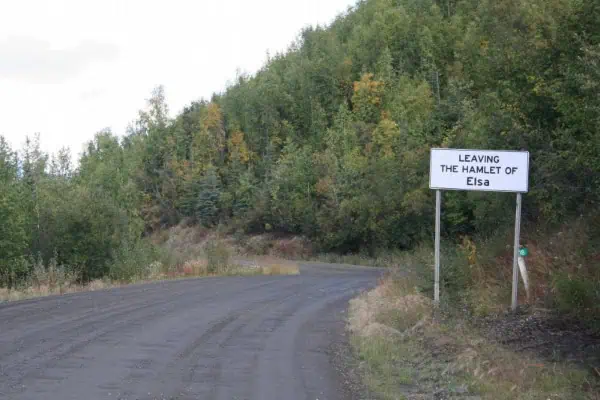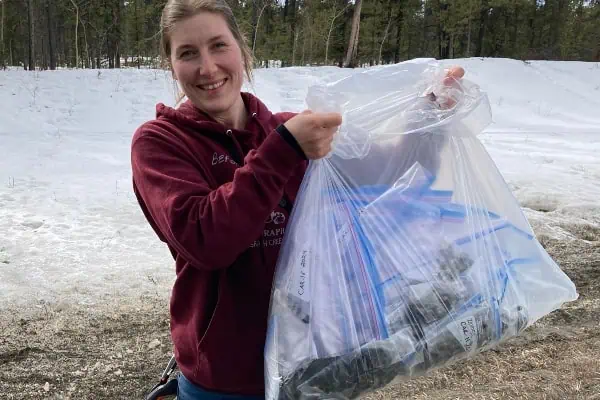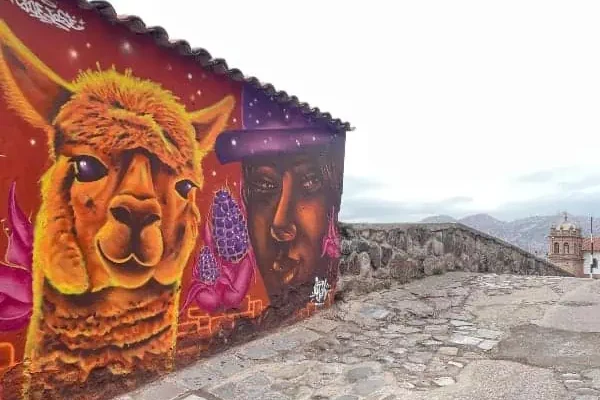The first time I saw this sign, I had to stop and pull over on the side of the road to make sure I had read it correctly. It was early spring in 2012 and I was travelling up the Alaska Highway for the first of what would be uncountable times. The decision to come to the Yukon (like most of my decisions) was rather spur-of-the-moment and I was woefully unprepared for both the pleasures and dangers of travelling the northern roads alone. Despite the signs, I was still surprised when I actually encountered the wood bison; huge, lumbering animals, shaggy as dogs, moving with a slow, certain confidence, totally unperturbed by the rushing cars as they grazed contentedly on the side of the highway. I remember seeing their curious, curving horns and their slumping backs, and thinking that they looked like a cave painting.
It turns out this thought wasn’t far from the mark. Bison, says Tom Jung, senior wildlife biologist for Environment Yukon, have existed in North America since the Pleistocene epoch, which spanned from 2.6 million to 11,700 years ago, where they lived alongside the now-extinct woolly mammoths. Yukon’s bison, too, also went extinct at one point, but much more recently than other megafauna; in the southwest Yukon, they vanished about 350 years ago, says Jung. The bison in the south east went extinct later, in 1930, due to increased hunting pressure. Why the south west population went extinct is a mystery, as it is unlikely they were hunted out, and Jung says it may have been a combination of habitat loss, disease and other factors.
“A lot of the (southwest Yukon) used to be grassland,” Jung says, “and that has really changed, although small pockets of this habitat, on which the current bison population feeds, remains.”
Both populations of bison have been reintroduced, although the animals seen along the Alaska Highway are not actually “Yukoners” and are managed by British Columbia. The southwest population – called the Aishihik Herd – was reintroduced into the Haines Junction area, onto the traditional territory of the Champagne and Aishihik First Nations, as part of a conservation project between 1988 and 1992. During this time 170 animals were released into the wild, a population which has swelled to 1,500 animals, making the Aishihik Herd one of the largest populations of wild bison in North America.
The herd has been so successful, biologically speaking, says Jung, that it sustains a hunting harvest, which allows people to get out on the land and take bison for food. The southeast population is not open to hunting, he notes. Bison can be exceptionally challenging to hunt, but very rewarding, both in terms of the experience is provides and the immense amount of food each animal can provide.
According to Yukon government hunting pamphlets, an adult male bison can dress out at over 750 pounds of meat. The hunting season for these animals runs from September to March 31st.
Wood bison are the largest land animal in North America, and differ from their smaller cousins, the plains bison, in that they are heavier and have thicker fur. Woods bison can stand nearly two metres tall and weigh up to 900 kg. Both males and females have horns. For more information on wood bison, go to www.env.gov.yk.ca and click on “Animals and Habitat” and drop down to find “wood bison” listed among the mammals.




